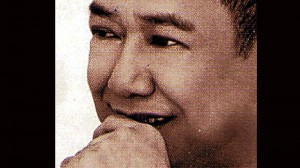Basil Valdez comes full circle
WE touched our arms as we took a break halfway through Basil Valdez’s four-hour master class at Ryan Cayabyab’s music school (at Robinsons Galleria) last Sunday—and we could feel our skin tingling! The visceral reaction didn’t surprise us: As we sat between Mr. C and NUT at the back of the room, it was hard not to get drawn to what we were seeing and hearing—a rare “event” only Ryan could get Basil to agree to!
As the iconic balladeer discussed essential points in pop singing, he took the audience on a heady trip down memory lane, retracing his performing roots back to 1968, when he first heard Dionne Warwick’s “Alfie” on his sister’s transistor radio. The lyrics of Burt Bacharach and Hal David’s 1965 movie theme song transfixed him like a worded symphony: “Are we meant to take more than we give—or are we meant to be kind?”
After a gentle push from Fr. Antonio Cuna, S.J., his “discoverer” at the Ateneo, Basil was encouraged to sing professionally—but, his initial attempts to learn the tricks of the singing trade were a bust: His audition for the Ateneo Glee Club didn’t go as planned—and, when he tried out at the UP College of Music, Aurelio Estanislao liked his voice, but told him to develop his pop style elsewhere.
Perseverance
Even his first few auditions at sing-along bars weren’t encouraging, because they were then partial to folk songs. But, his perseverance finally paid off when he incorporated Cat Stevens (“Father and Son,” “Morning Has Broken”) into his repertoire, from which he earned P10 per hour for his four-sets-a-night gigs. His craft was honed further when he joined the Circus Band and other singing groups in the ’70s.
Article continues after this advertisementBut, his career really took off when he met producer Vic del Rosario and composer George Canseco, who asked him to listen to the demo of a song they said was perfect for Basil. He laughingly recalled, “Ang problema, nung pinakinggan ko na, hindi ko ma-appreciate ang kanta—kasi ‘teng teng teng’ lang ang naririnig ko, dahil instrumental s’ya, at putul-putol pa!” In no time, the “incomprehensible” song would become Basil’s signature hit—“Ngayon at Kailanman”—and the rest is history.
Article continues after this advertisementBasil’s lecture was full of anecdotes and tips for singers. To stress a point, the balladeer would either recite a tune’s lyrics or sing them (“I’m better at singing than lecturing”), each tune given a more contemporary arrangement by Ryan. The exciting, nine-song set included “Alfie,” “Ngayon at Kailanman,” “Kastilyong Buhangin,” “Nais Ko,” “Paraisong Parisukat,” “Ngayon,” “Ama,” “You” and the breathtakingly stirring “Salamin ng Buhay”—and was the SRO class’ pièce de résistance, which should be released as a CD/DVD set.
The singer’s almost faultless renditions in the master class cum concert proved that the tracks in his latest hit album, “Basil S. Valdez,” didn’t need much polishing and technological tweaking. What is the secret to Basil’s sweeping, timeless tunes? Mr. C whispered to us, “The lyrics are very important to him.”
Exceptional scholars
It was also a treat to hear the music school’s exceptional scholars (before they were critiqued by Basil and Ryan)—even its “weakest” singer impressed us, because he knew how to accentuate his strengths and judiciously mask his limitations! The young singers are products of the school’s collaborative project with Music Museum—so, we hope this fruitful partnership continues to nurture promising talents who could be tomorrow’s singing stars.
For Basil, sharing what he knows with young singers is like coming full circle. After happily disclosing that he turned 60 last November, he said that resting on his laurels was farthest from his mind, because he intends to continue singing long after he passes on to the afterlife: “I’m just a conduit for the healing message of God. I’m doing my best to ‘rehearse’ now—so that, when my time comes, I can audition for the Choir of Angels in heaven!”
